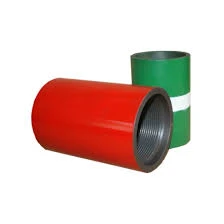- Afrikaans
- Albanian
- Amharic
- Arabic
- Armenian
- Azerbaijani
- Basque
- Belarusian
- Bengali
- Bosnian
- Bulgarian
- Catalan
- Cebuano
- Corsican
- Croatian
- Czech
- Danish
- Dutch
- English
- Esperanto
- Estonian
- Finnish
- French
- Frisian
- Galician
- Georgian
- German
- Greek
- Gujarati
- Haitian Creole
- hausa
- hawaiian
- Hebrew
- Hindi
- Miao
- Hungarian
- Icelandic
- igbo
- Indonesian
- irish
- Italian
- Japanese
- Javanese
- Kannada
- kazakh
- Khmer
- Rwandese
- Korean
- Kurdish
- Kyrgyz
- Lao
- Latin
- Latvian
- Lithuanian
- Luxembourgish
- Macedonian
- Malgashi
- Malay
- Malayalam
- Maltese
- Maori
- Marathi
- Mongolian
- Myanmar
- Nepali
- Norwegian
- Norwegian
- Occitan
- Pashto
- Persian
- Polish
- Portuguese
- Punjabi
- Romanian
- Russian
- Samoan
- Scottish Gaelic
- Serbian
- Sesotho
- Shona
- Sindhi
- Sinhala
- Slovak
- Slovenian
- Somali
- Spanish
- Sundanese
- Swahili
- Swedish
- Tagalog
- Tajik
- Tamil
- Tatar
- Telugu
- Thai
- Turkish
- Turkmen
- Ukrainian
- Urdu
- Uighur
- Uzbek
- Vietnamese
- Welsh
- Bantu
- Yiddish
- Yoruba
- Zulu
Understanding the Key Differences Between Casing and Tubing in Oil Production
Differences Between Casing and Tubing in Oil and Gas Industry
In the oil and gas industry, the extraction and transportation of hydrocarbons are complex processes that rely heavily on the use of various types of pipes. Two of the most fundamental components in this process are casing and tubing. Although they serve vital roles in the drilling and production of oil and gas, they are distinct in their functions, materials, and applications. Understanding the differences between these two components is essential for any professional in the oil and gas sector.
1. Definition and Purpose
Casing and tubing are both types of pipe used in oil and gas wells, but they have different purposes. Casing is a series of pipes that are installed during the drilling process to stabilize the wellbore. It is lined against the borehole walls and helps to prevent the collapse of the well. Additionally, casing serves to isolate the various geological formations encountered during drilling, preventing the migration of fluids between these layers.
On the other hand, tubing refers to the pipes that run inside the casing and are used to transport the hydrocarbons from the reservoir to the surface. The primary purpose of tubing is to facilitate the flow of oil and gas. Once production begins, the tubing allows for the efficient extraction of hydrocarbons while minimizing the potential for pressure loss.
2. Materials and Construction
Casing and tubing are constructed from different materials and have varying specifications. Casing pipes are generally thicker and stronger than tubing pipes, as they are designed to withstand high pressures and environmental stresses within the wellbore. They are usually made from carbon steel, and coatings are often applied to enhance corrosion resistance and durability. Casing is available in various sizes, grades, and lengths, depending on the depth and requirements of the well.
Conversely, tubing pipes are typically smaller in diameter and constructed from lighter materials. They are available in a range of materials, including stainless steel and alloyed steel, which offer higher resistance to corrosion and wear due to the harsh conditions encountered in oil and gas wells. Tubing specifications also vary based on the production needs and reservoir characteristics.
what are the differences between casing and tubing?

The installation processes for casing and tubing differ significantly. Casing is installed first during the drilling phase of a well. The casing string is lowered into the wellbore, and cement is pumped in to secure it in place and provide additional support. Once the casing is secured, the well can be drilled further to reach the targeted hydrocarbon reservoir.
After drilling is completed and the casing is in place, tubing is then inserted. The tubing is often run through the casing and set up for production. Depending on the well’s design, multiple tubing strings may be installed to optimize production.
The lifecycle of these components also varies. Casing is generally a permanent installation that remains in place as long as the well is active, while tubing can be replaced or serviced more frequently. Over time, production tubing may experience wear and tear due to the flow of fluids, necessitating its replacement to maintain efficient operations.
4. Pressure Management
One of the most critical differences between casing and tubing is their role in pressure management within the well. Casing provides structural integrity and helps manage the external pressures exerted by surrounding geological formations. This prevents wellbore collapse and is crucial during the drilling process.
In contrast, tubing manages the internal pressures of the produced hydrocarbons. It is designed to handle the pressures and flow rates encountered during production. A failure in the tubing can lead to significant production losses, while a failure in the casing can compromise the entire well and pose safety hazards.
Conclusion
In summary, casing and tubing play essential but different roles in oil and gas operations. Casing provides structural support and isolation for the wellbore, while tubing facilitates the extraction of hydrocarbons. Each has distinct materials, construction, installation processes, and lifecycle considerations. Understanding these differences is vital for ensuring the safety, efficiency, and effectiveness of oil and gas production operations. Proper management of both casing and tubing is crucial for maximizing productivity and mitigating risks in the oil and gas industry.
-
Tubing Pup Joints: Essential Components for Oil and Gas OperationsNewsJul.10,2025
-
Pup Joints: Essential Components for Reliable Drilling OperationsNewsJul.10,2025
-
Pipe Couplings: Connecting Your World EfficientlyNewsJul.10,2025
-
Mastering Oilfield Operations with Quality Tubing and CasingNewsJul.10,2025
-
High-Quality Casing Couplings for Every NeedNewsJul.10,2025
-
Boost Your Drilling Efficiency with Premium Crossover Tools & Seating NipplesNewsJul.10,2025







